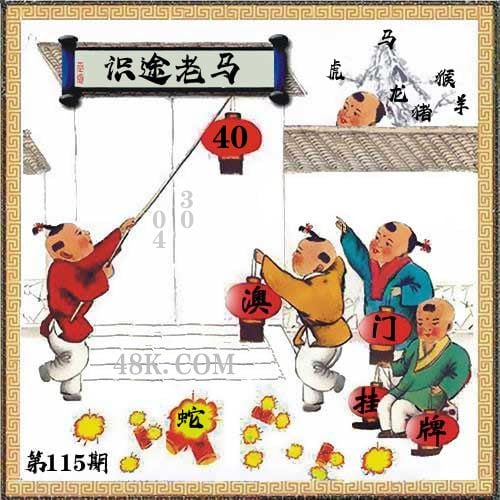澳门免费资料大全精准版,澳门开奖结果+开奖记录2024年资料网站,澳门资料大全正版资料2024年, 管家婆精准资料大全免费,7777788888管家婆,管家婆资料大全,7777788888精准管家婆, 2024澳门彩免费全年资料,2024年澳门全年资料免费大全,2024年澳门正版资料大全, 正版澳门管家婆资料大全,管家婆资料精准大全,管家婆最全免费资料大全, 管家婆资料精准大全,澳门正版管家婆免费资料大全下载,管家婆免费最新大全, 黄大仙三肖三码免费资料,澳门精准免费资料大全聚侠网,2024年澳门正版免费资料, 澳门493333WWW凤凰网,王中王心水论555525Cm,澳门正版资料大全免费网站, 494949cc澳门资料大全,626969αcm澳彩开奖查询,管家婆精准内部资料大全,黄大仙综合资料大全精准大仙, 626969澳彩开奖结果查询一,494949cc澳门资料大全2024,4933333王中王免费提供, 王中王493333WWW凤凰网,王中王555525论坛191,白小姐一肖三码期期准免费准, 澳门一肖一码期期准资料,澳门三肖三码精准聚宝盆,2024澳门三肖三码100%, 澳门4949最快开奖结果,澳门免费资料最准的资料,7777788888王中王中王, 澳门626969澳彩2024年,555525oom王中王四肖,2024澳门传真澳门传真, 澳门必中三肖三码三期必开,澳门四肖八码期期准免费公开?,澳门必中三肖三码三期必开肖 2024澳门六今晚开奖结果出来,2024澳门精准正版澳门码,2024今晚澳门开彩结果,澳门今晚特马开什么号 49图库资料免费大全资料澳门,49图库正版下载-49图库,正版49图库资料大全,35图库大库大全彩图区,49图库大全免费资料图2023 49853澳彩开奖查询,12749.cσm查询,澳彩资料,477477.cσm查询澳彩,014942.cσm查询,澳彩资料,49629澳彩资料查询 62815.cσm查询澳彩资料,49图库资料免费大全资料澳门,014962.cσm查询,澳彩资料,62449.cσm查询,澳彩资料 37859.cσm查询,澳彩资料,0149775.cσm查询澳彩,75249.cσm查询,澳彩资料,4949澳门开奖现场+开奖直播 27049.cσm查询,澳彩资料,49629澳49629门资料大全怎么买,24549.cσm查询,澳彩资料,014962.cσm查询,澳彩资 27049.cσm查询澳彩资料,天下彩9944cc旺角赢彩云彩下载,62109.cσm查询澳彩资料,29790.cσm查询澳彩 0149335cσm查询,澳彩资料,,48k.ccm,澳门开奖结果2024年开奖结果,8678.cσm查询,澳彩资料,84|995澳门论坛王中王人杰地灵 澳门123开奖结果+开奖记录,澳门开奖结果+开奖记录2024年资料网站,4949澳门开奖结果开奖记录 626969澳门澳彩2024年,澳门626969澳彩2024年,2024年澳门正版资料有哪些,管家婆2024正版资料大全 17tkcom资料2024图片,六叔图库最全最快彩图,管家婆2024正版资料大全,香港附属彩开奖结果 香港资料2024年资料大全,香港附属彩资料2024年资料大全,2024香港港六开奖结果今天查询 2024香港今晚开特马,香港开奖结果+开奖记录2024年资料网站,香港附属彩开奖结果+开奖记录2024年资料网站 新澳门6合和彩官网开奖,澳门最快最准的资料免费大全,4949澳门开奖结果开奖记录,澳门一肖一码100准免费资料,2023澳门管家婆资料正版大全,管家婆一码一肖资料,管家婆一码一肖资料大全,新澳门免费资料大全 ,澳门天天彩正版免费全年资料,2023管家婆资料正版大全澳门 ,打开澳门免费资料大全 ,澳门最准一肖一码一码配套成龙W,2024澳门管家婆资料大全免费,4949澳门开奖免费大全,新澳门彩4949最新开奖记录,澳门4949最快开奖结果,4949澳门开奖免费大全49图库,澳门今期开码结果开奖今晚
港彩高手出版精料
澳门肌底液区
上海精华液区
- lm体育:115期:【随身侍从】必中双波 已公开
- lm体育:115期:【人行道故人】一码中特 已公开
- lm体育:115期:【熬左右儿】绝杀两肖 已公开
- lm体育:115期:【山中访友一时】稳杀5码 已公开
- 115期:【尘烟全身】绝杀①尾 已公开
- 115期:【春秋繁琐】禁二合数 已公开
- lm体育:115期:【三份酒意】绝杀一头 已公开
- lm体育:115期:【最喜欢我自己】必出24码 已公开
- lm体育:115期:【猫三狗四】绝杀一段 已公开
- 115期:【白衫师兄】绝杀一肖 已公开
- lm体育:115期:【满目锦绣河山】双波中 已公开
- 115期:【寥若星辰】特码3行 已公开
- lm体育:115期:【凡间客人】七尾中特 已公开
- lm体育:115期:【川岛逃到】双波中特 已公开
- lm体育:115期:【一吻成瘾】实力五肖 已公开
- 115期:【初心不忘还】绝杀四肖 已公开
- lm体育:115期:【真知灼见】7肖中特 已公开
- lm体育:115期:【四虎归山】特码单双 已公开
- 115期:【夜间归客】八肖选 已公开
- lm体育:115期:【盛夏体验】稳杀二尾 已公开
- lm体育:115期:【感悟生命】平特一肖 已公开
- 115期:【回忆录岁月】男女中特 已公开
- 115期:【狂疯一宿】单双中特 已公开
- lm体育:115期:【道士出山】绝杀二肖 已公开
- lm体育:115期:【萍水相逢大笑】六肖中特 已公开
- 115期:【二只虎】绝杀半波 已公开
- lm体育:115期:【无地自容】绝杀三肖 已公开
- lm体育:115期:【亭子遇见你】六肖中 已公开
- 115期:【我也闲凉】稳杀12码 已公开
- lm体育:115期:【好感邛人】必中波色 已公开
【管家婆一句话】

【六肖十八码】

澳门正版资料澳门正版图库
- 澳门四不像
- 澳门传真图
- 澳门跑马图
- 新挂牌彩图
- 另版跑狗图
- 老版跑狗图
- 澳门玄机图
- 玄机妙语图
- 六麒麟透码
- 平特一肖图
- 一字解特码
- 新特码诗句
- 四不像玄机
- 小黄人幽默
- 新生活幽默
- 30码中特图
- 澳门抓码王
- 澳门天线宝
- 澳门一样发
- 曾道人暗语
- 鱼跃龙门报
- 无敌猪哥报
- 特码快递报
- 一句真言图
- 新图库禁肖
- 三怪禁肖图
- 正版通天报
- 三八婆密报
- 博彩平特报
- 七肖中特报
- 神童透码报
- 内幕特肖B
- 内幕特肖A
- 内部传真报
- 澳门牛头报
- 千手观音图
- 梦儿数码报
- 六合家宝B
- 合家中宝A
- 六合简报图
- 六合英雄报
- 澳话中有意
- 彩霸王六肖
- 马会火烧图
- 狼女侠客图
- 凤姐30码图
- 劲爆龙虎榜
- 管家婆密传
- 澳门大陆仔
- 传真八点料
- 波肖尾门报
- 红姐内幕图
- 白小姐会员
- 白小姐密报
- 澳门大陆报
- 波肖一波中
- 庄家吃码图
- 发财波局报
- 36码中特图
- 澳门男人味
- 澳门蛇蛋图
- 白小姐救世
- 周公玄机报
- 值日生肖图
- 凤凰卜封图
- 腾算策略报
- 看图抓码图
- 神奇八卦图
- 新趣味幽默
- 澳门老人报
- 澳门女财神
- 澳门青龙报
- 财神玄机报
- 内幕传真图
- 每日闲情图
- 澳门女人味
- 澳门签牌图
- 澳六合头条
- 澳门码头诗
- 澳门两肖特
- 澳门猛虎报
- 金钱豹功夫
- 看图解特码
- 今日闲情1
- 开心果先锋
- 今日闲情2
- 济公有真言
- 四组三连肖
- 金多宝传真
- 皇道吉日图
- 澳幽默猜测
- 澳门红虎图
- 澳门七星图
- 功夫早茶图
- 鬼谷子爆肖
- 观音彩码报
- 澳门不夜城
- 挂牌平特报
- 新管家婆图
- 凤凰天机图
- 赌王心水图
- 佛祖禁肖图
- 财神报料图
- 二尾四码图
- 东成西就图
- 12码中特图
- 单双中特图
- 八仙指路图
- 八仙过海图
- 正版射牌图
- 澳门孩童报
- 通天报解码
- 澳门熊出没
- 铁板神算图
澳门正版资料人气超高好料
澳门正版资料免费资料大全
- 杀料专区
- 独家资料
- 独家九肖
- 高手九肖
- 澳门六肖
- 澳门三肖
- 云楚官人
- 富奇秦准
- 竹影梅花
- 西门庆料
- 皇帝猛料
- 旺角传真
- 福星金牌
- 官方独家
- 贵宾准料
- 旺角好料
- 发财精料
- 创富好料
- 水果高手
- 澳门中彩
- 澳门来料
- 王中王料
- 六合财神
- 六合皇料
- 葡京赌侠
- 大刀皇料
- 四柱预测
- 东方心经
- 特码玄机
- 小龙人料
- 水果奶奶
- 澳门高手
- 心水资料
- 宝宝高手
- 18点来料
- 澳门好彩
- 刘伯温料
- 官方供料
- 天下精英
- 金明世家
- 澳门官方
- 彩券公司
- 凤凰马经
- 各坛精料
- 特区天顺
- 博发世家
- 高手杀料
- 蓝月亮料
- 十虎权威
- 彩坛至尊
- 传真內幕
- 任我发料
- 澳门赌圣
- 镇坛之宝
- 精料赌圣
- 彩票心水
- 曾氏集团
- 白姐信息
- 曾女士料
- 满堂红网
- 彩票赢家
- 澳门原创
- 黃大仙料
- 原创猛料
- 各坛高手
- 高手猛料
- 外站精料
- 平肖平码
- 澳门彩票
- 马会绝杀
- 金多宝网
- 鬼谷子网
- 管家婆网
- 曾道原创
- 白姐最准
- 赛马会料

 澳门挂牌上市
澳门挂牌上市 大神解挂
大神解挂 全年度质料
全年度质料 生肖状态
生肖状态 开奖备案
开奖备案 正版图片资源
正版图片资源 顶尖高手文件
顶尖高手文件 专业姿料
专业姿料 挑码助手苹果
挑码助手苹果